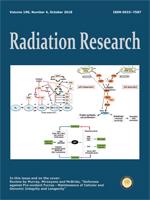Experimental radiobiological studies in which the effects of ionizing radiation on a biological model are examined often highlight the biological aspects while missing detailed descriptions of the geometry, sample and dosimetric methods used. Such omissions can hinder the reproducibility and comparability of the experimental data. An application based on the Geant4 simulation toolkit was developed to design experiments using a biological solution placed in a microtube. The application was used to demonstrate the influence of the type of microtube, sample volume and energy of a proton source on the dose distribution across the sample, and on the mean dose in the whole sample. The results shown here are for samples represented by liquid water in the 0.4-, 1.5- and 2.0-ml microtubes irradiated with 20, 30 and 100 MeV proton beams. The results of this work demonstrate that the mean dose and homogeneity of the dose distribution within the sample strongly depend on all three parameters. Furthermore, this work shows how the dose uncertainty propagates into the scored primary DNA damages in plasmid DNA studies using agarose gel electrophoresis. This application is provided freely to assist users in verifying their experimental setup prior to the experiment.
How to translate text using browser tools
27 July 2018
Dosimetry as a Catch in Radiobiology Experiments
Martin Šefl,
Kateřina Pachnerová Brabcová,
Václav Štěpán
ACCESS THE FULL ARTICLE

Radiation Research
Vol. 190 • No. 4
October 2018
Vol. 190 • No. 4
October 2018




